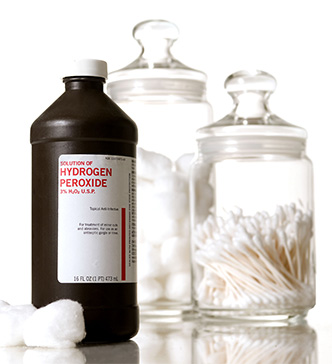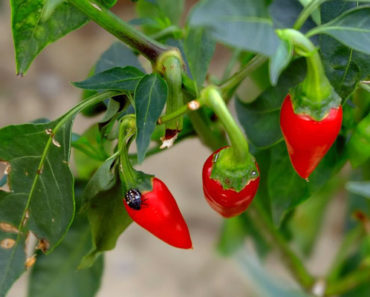Have you ever seen gnats around your garden that hang around mushrooms or decayed vegetation? They might be fungus gnats. These types of flies like to eat fungi and their larvae will feed mainly on decayed organics too. While they’re not harmful to humans as they don’t bite, their larvae can look unsightly, and swarms of fungus gnats are not fun to have in the yard. Most people will choose to find safe treatments to eradicate them from the yard, garden, and house.
Fungus gnats can also live in houseplants, making them a particular nuisance inside the home. They really enjoy living in house plants where the humidity and moisture is high. There are many different types, but the ones from the insect families Mycetophilidae and Sciaridae, are some of the most common flying pests indoors.
How Can Fungus Gnats Cause Problems?
Even thought fungus gnats are not biting insects, they can cause some problems indoors or outdoors. They are attracted to C02, so will fly annoying around humans or pets. Since their larval stage lives in the soil, the larvae also feed on whatever is in the soil, including any tender plant roots. They can potentially kill your house plants or your garden plantings.
If you have fungus gnats you may begin to see problems in your plants. They may begin wilting, lose their vigour, stop growing, and their leaves may turn to yellow. Over time, a lot of the plants may be eaten up.
The following four plants are especially sensitive to a bad fungus gnats infestation:
- Geraniums
- African violets
- Carnations
- Poinsettias
What Do Fungus Gnats Look Like?
Fungus gnats can be mistaken for mosquitoes. In their adult stage they have long delicate bodies and narrow clear wings. Their bodies may look like dark black or an iridescent blue. They are about 1/8th of an inch long. They have long legs. They are not strong fliers and will live near potted plants where they can obtain their nutrition.
In their larval or maggot form they will be about 1/4 inch long. They have shiny black heads and a long whitish to transparent body.
How Do I Know if I Have Fungus Gnats in My Home?
If you begin to see flies flying around your house plants, or gathering near a window, and they are larger than a fruit fly, they are likely fungus gnats.
You can also have a look at the soil inside the plants to look for larvae or maggots. They especially enjoy damp, rich soil, as they feed on roots, fungi and other organic materials in the soil.
It may be a bit harder to discern them in your garden outdoors, and the infestation may be further along when you do notice them for the first time.
Adult fungus gnats flies live for one week, and can lay about 300 eggs in soil. In four to six days the larvae will emerge, and feed for the next two weeks. Once they’re in their maggot stage, for three to four days, they’ll then emerge with wings. It can take three to four weeks for the entire lifecycle. You can begin to see how you can have a major infestation in only a month’s time.
How to Get Rid of Gnats using H202?
You’ll need to find the best remedies to get rid of fungus gnats in all of their life stages: egg, larvae, pupae, adult. Whatever your chosen remedy, you’ll need to do multiple applications until there are no surviving eggs.
Hydrogen peroxide is one of the best methods for ridding your home, indoors or out, from fungus gnats. Not only is it a natural method, it’s safe to use around your family and your house and garden plants. It’s also fairly inexpensive and simple to do.
Many people are hesitant to buy spray pesticides, particularly in homes with dogs, cats, and children. Also, the safety of food in the kitchen could be compromised. This is why hydrogen peroxide can be one of the most effective treatments for killing them.
 Hydrogen peroxide is a chemical compound with the formula of H2O2. It’s commonly been used for medical care, to sterilize and disinfectant wounds, abrasions, and skin infections. It’s naturally colourless, but the form that is sold in stores is mixed with water, so it’s safer, as pure hydrogen peroxide can burn the skin. It has a slight smell that isn’t too unpleasant. The bottled solution you buy in stores is usually around 3%, which is suitable for your anti-insect purposes.
Hydrogen peroxide is a chemical compound with the formula of H2O2. It’s commonly been used for medical care, to sterilize and disinfectant wounds, abrasions, and skin infections. It’s naturally colourless, but the form that is sold in stores is mixed with water, so it’s safer, as pure hydrogen peroxide can burn the skin. It has a slight smell that isn’t too unpleasant. The bottled solution you buy in stores is usually around 3%, which is suitable for your anti-insect purposes.
Hydrogen peroxide is safe to come into contact with human or pet skin, so should any of the hydrogen peroxide gnat killer come into contact, little harm will be done. Most animals will steer clear of the smell.
Hydrogen peroxide is a natural oxidizer, bleaching agent, and a disinfectant. It’s effective on fungus gnats because they have a delicate body. The hydrogen peroxide will kill the fungus gnat larvae on contact, but will not harm the soil or your plants. Hydrogen peroxide will also not harm helpful garden insects such as lady bugs.
Recipe to Make Your Own H202 Gnat Killer
You can make your own fungus gnat killer to eliminate these insects in your household plants, or your garden. It’s simple and easy to do.
Ingredients for H202 Gnat Killer
Purchase and assemble together the following ingredients and items.
- One cup of 3% or higher hydrogen peroxide from supermarket or pharmacy.
- Three cups of tap water.
- Plastic bottle with spray nozzle—buy from dollar store or wash out a household cleanser bottle.
Method
Place the following ingredients together to mix up your fungus gnat killer.
- Pour the hydrogen peroxide in the bottle.
- Pour in the water.
- Gently shake to mix together.
How to Apply Your H202 to Get Rid of Gnats
It’s simple to apply your H202 solution to get rid of gnats from your home, plants, or garden.
- Allow the top of the soil to dry first before beginning treatment.
- Spray the solution onto the beneath your plants
- You can safely spray the plant leaves too.
- You’ll notice the soil fizzing up for a few minutes, but it is normal.
- Fungus gnat larvae will die on direct contact with the H202.
- After the fizzing stops, the H202 will break down into harmless oxygen and water molecules, supplying water to the plant.
- Repeat your H202 treatment once a day until you no longer see any more fungus gnats flying through the air, or larvae or maggots in your soil.
- You may wish to add an extra week of treatment to be sure you killed all the eggs and larvae, and that all the flying gnats are dead.
Other Tips to Control Fungus Gnats
There are also some other ways that you can control fungus gnats while you’re doing your H202 treatment.
1. Cinnamon Powder.
- Cinnamon powder can be purchased from any supermarket or grocery store.
- Buy Ceylon Cinnamomum verum to ensure 100% efficacy.
- Sprinkle cinnamon powder on top of soil.
2. Attract fungus gnats away from your plants.
- Place a small bowl filled with vinegar, soap and water near your plants.
- The gnats will be attracted to the vinegar and drown.
3. Other Ways to Prevent Fungus Gnat Infestation.
- Ensure that your plants have the proper drainage.
- All containers should have holes in the base.
- Regularly drain the plates or containers under your plants so stagnant water is removed.
- Remove any leaves, or other organic debris from directly underneath plants.
- Buy adhesive fly traps so if any sneak in from outside, they are quickly trapped.
- Let the upper soil dry between watering your plants.
- Use window and door screens and ensure they are working properly.
Cautions When Using Fungus Gnat Treatments
There are a few concerns that should be taken into consideration when doing your hydrogen peroxide treatments.
- H202 may be harmful to certain beneficial soil earthworms.
- Cinnamon can also be harmful to earthworms.
- Complete your cycle of anti-fungus gnat treatments until they are eradicated, and then stop.
- Consider other natural pesticide treatments for future prevention in outdoor gardens, such as citrus oil, Neem, salt spray, etc., which will be safer for bees and other beneficial insects in the garden.
- Do not discard infested soil without treating it first—the fungus gnats could infest other parts of your garden.
Fungus gnats may seem like a small pest to humans when compared to other types of insects, but they can eat up your houseplants and cause you money, as you’ll have to replace them. They can cause damage in the garden too, which can be tragic if you are growing herbs, flowers, fruits and vegetables.
Be sure to examine the soil on a regular basis so that if you do get an infestation of fungus gnats or any other type of bug, you can begin treatment immediately. Fortunately, fungus gnats are easy to get rid of, and treatments such as hydrogen peroxide, cinnamon powder, combined with preventative measures, are simple and inexpensive to do.



I tried everything, I had an infestation, I put an inch of sand on top of my soil, I haven’t only seen a couple fly around, I quickly eliminate it, they can’t emerge and they can’t lay eggs, so I’m waiting it out, in the mean time I’m heading peroxide and BT. I started an indoor vegetable garden and they stunted all my veggie plants, I might as well wait till spring, but I’m determined. But the sand is working wonderful
That’s a great idea! Thank you for sharing. It seems like every time I get them under control they pop back up and seem more determined than before to live in my plants.
I am going to try the hydrogen peroxide treatment when I re-potted my houseplants for winter i must have gotten the fungus gnat eggs I have them in my houseplants they’re annoying to me and my plants so I will try this if it doesn’t work i will try some of the other methods to get rid of them.